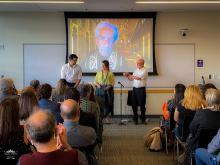This spring quarter, the students in Persian 454, taught by Prof. Aria Fani, translated excerpts from the "Legend of Siavash" from the Shahnameh of Ferdowsi into Korean, Urdu, Arabic, Spanish, and English (including Shakespearean English). Here you can listen to and read their beautiful translations. The course aimed to make the study of the Shahnameh more accessible by exploring different models of historicizing, reading, reciting, and translating it.
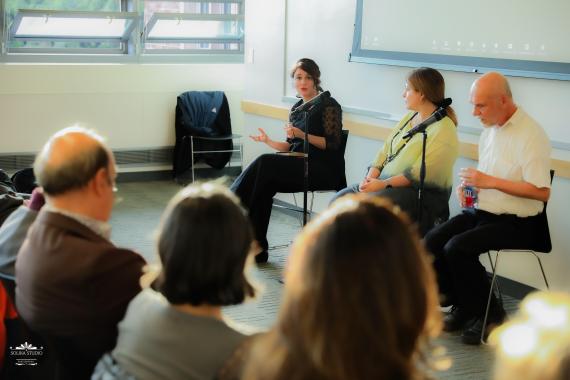
Throughout the course, students listened to and interacted with a diverse group of speakers who animated different aspects of the Shahnameh. Prof. Naghmeh Samini (University of Tehran and NELC affiliate) spoke about dramatic retellings of the Shahnameh, particularly the oral form of naqqali. Prof. Sam Hodgkin (Yale University) discussed the shifting reception of the Shahnameh in the Soviet Union in the twentieth century. Dr. Jawad Ramyar (University of Herat) talked about how he connected with the Shahnameh while growing up in Afghanistan and how he’s discovering it anew with his young daughters. Salome MC, an Iranian rapper, producer, and multimedia artist, spoke about the relevance of the Shahnameh to the formation of rap and hip hop music in Iran. And Prof. Chris Waldo (UW Classics) talked about the changing meaning of epic as a category.
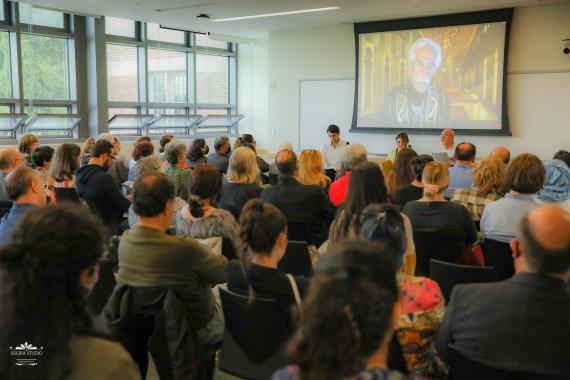
During the final week of classes, a San Diego-based theater group visited the University of Washington for a public-facing dramatic recitation of the Shahnameh. This event was a collaboration between NELC and the non-profit organization Peyvand. The theater group was led by the veteran play-actor Mahmoud Behrouzian, and included Prof. Rana Salimi (University of San Diego), Nazanin Ghaziari, Dadyar Vakili, and Reza Khabazian (joining via zoom). On June 1, the group attended the recitations of the Persian 454 students. Each student had selected a different section of the Legend of Siavash and translated it into five different languages.
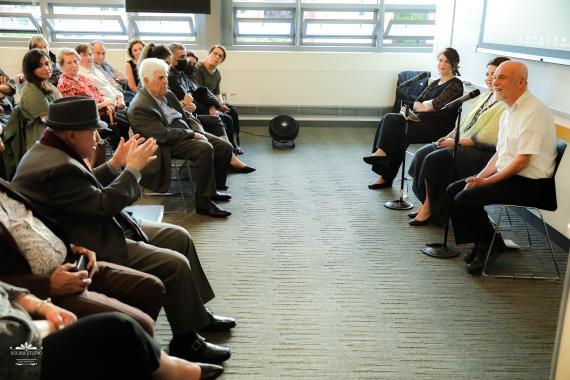
On June 2, an audience of 90 people from the university and the Seattle Iranian community attended the group’s dramatic reading. After the performance, Prof. Samini facilitated a panel discussion featuring Mr. Behrouzian and Prof. Salimi. The panelists challenged nationalist framings of the Shahnameh as a sacred relic of a timeless Iranian identity and highlighted the urgent need to create more contemporary adaptations of the text. The panelists said that the students’ translations deeply inspired them, serving as a dynamic model for making literary connections across genres and languages. “I never thought I’d be able to hear Ferdowsi’s voice come across so powerfully in Korean or Spanish, languages I don’t even understand,” said Behrouzian.
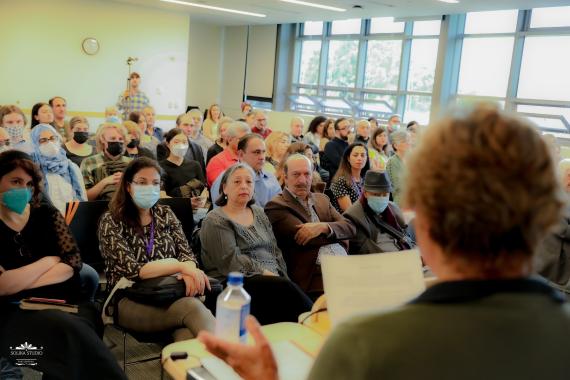
Minsoo Jeon, a student in NELC’s Turkish and Ottoman Studies MA program, said that the “opportunity to read the Shahnameh closely and translate part of it into our first languages was fantastic. I was truly fascinated by the dramatic recitation because I could understand what they were conveying. It was one of the most resonant performances that I have ever watched.” Several audience members, representing different generations of Persian speakers from the Seattle Iranian community, said that NELC students and the performers had inspired them to pick up the Shahnameh again, a text that they find intimidating and inaccessible. As Prof. Samini explained, “For works of classical literature to occupy a more central place in our lives today, we need to continue opening them to creative and collaborative projects across different genres, disciplines, and languages.”
Photographs by Soolmaz Dadgari of Solika Studio
